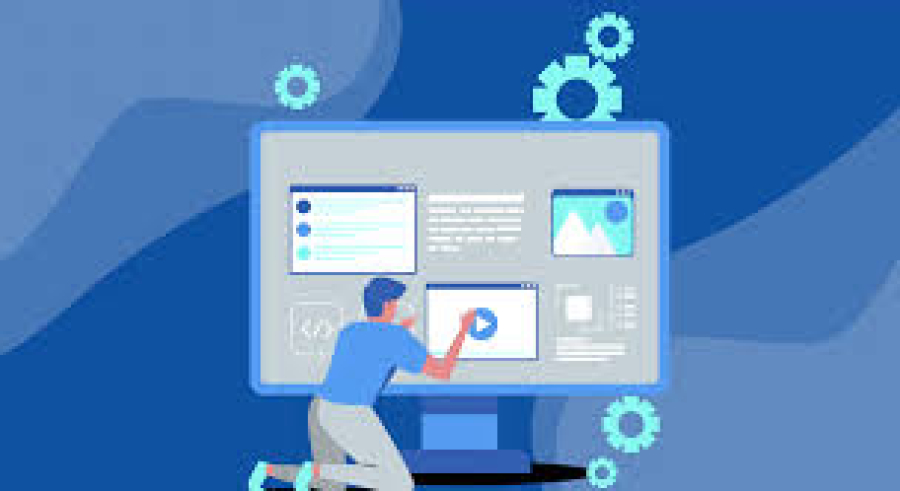10 Common WordPress Website Mistakes and How to Avoid Them
Building a website with #WordPress can be an exciting and rewarding experience, but it’s easy to make mistakes along the way. As one of the most popular content management systems, WordPress offers flexibility and ease of use. However, even experienced developers sometimes overlook key details, which can lead to performance issues, security risks, or poor user experience. In this article, we will explore 10 Common WordPress Website Mistakes and provide tips on how to avoid them.
Long Description
When it comes to #WordPressWebsite development, many developers and site owners make avoidable mistakes that can affect the performance, security, and user experience of their websites. These mistakes can range from overlooking updates and security measures to ignoring performance optimization. Fortunately, these mistakes are easy to avoid if you know what to look out for.
Let’s take a look at some of the most common WordPress website mistakes and how you can avoid them:
1. Not Updating WordPress Regularly
Not keeping your #WordPressWebsite updated is one of the most common mistakes. WordPress releases frequent updates for security patches, bug fixes, and new features. Failing to update your website can leave it vulnerable to security breaches.
How to avoid it:
Always install the latest version of WordPress, plugins, and themes.
Set up automatic updates where possible.
2. Using Weak Passwords
Many users use weak passwords for their WordPress admin account, which is a serious security risk.
How to avoid it:
Use strong, unique passwords for all admin accounts.
Consider using a password manager to generate and store complex passwords.
3. Ignoring Backups
Not backing up your WordPress site regularly can lead to disaster if anything goes wrong.
How to avoid it:
Use WordPress backup plugins like UpdraftPlus or BackupBuddy to automate regular backups.
Store backups in multiple locations (cloud storage, external drives).
4. Not Using Caching
Without caching, your WordPress website may load slowly, which can frustrate visitors and harm your SEO rankings.
How to avoid it:
Use a caching plugin such as W3 Total Cache or WP Super Cache to speed up your website.
Regularly clear the cache for optimal performance.
5. Using Too Many Plugins
Overloading your website with too many plugins can lead to performance issues, security risks, and conflicts between plugins.
How to avoid it:
Only install essential plugins and make sure they are from reputable sources.
Regularly audit your plugins and delete any that are unnecessary.
6. Not Optimizing Images
Large image files can slow down your WordPress site, leading to poor performance and a negative user experience.
How to avoid it:
Optimize images before uploading them using tools like TinyPNG or ImageOptim.
Use a WordPress plugin like Smush to automatically compress images.
7. Ignoring Mobile Optimization
In 2025, mobile optimization is more important than ever, as a majority of users access websites from their mobile devices.
How to avoid it:
Choose responsive WordPress themes that automatically adjust to different screen sizes.
Test your website on multiple devices to ensure it’s mobile-friendly.
8. Choosing the Wrong Hosting Provider
Not all hosting providers are created equal, and choosing the wrong one can lead to slow loading times and frequent downtime.
How to avoid it:
Invest in a reputable WordPress hosting provider like SiteGround, WP Engine, or Bluehost.
Ensure the host offers WordPress-specific features like automatic updates, backups, and optimized performance.
9. Not Configuring SEO Settings Properly
A WordPress site that isn’t properly optimized for search engines won’t rank well in search results.
How to avoid it:
Use an SEO plugin like Yoast SEO or Rank Math to optimize your content, meta descriptions, and URLs.
Follow SEO best practices for on-page optimization and focus on content quality.
10. Neglecting Security Measures
WordPress websites are often targeted by hackers due to their popularity. Failing to secure your site can lead to serious vulnerabilities.
How to avoid it:
Install a security plugin like Wordfence or Sucuri to protect your website from attacks.
Regularly change passwords, limit login attempts, and use SSL certificates.
Conclusion
Avoiding these common mistakes can significantly improve the security, performance, and user experience of your WordPress website. By implementing the best practices listed above, you can ensure that your site runs smoothly, remains secure, and provides a positive experience for visitors.


 by Emily
by Emily




